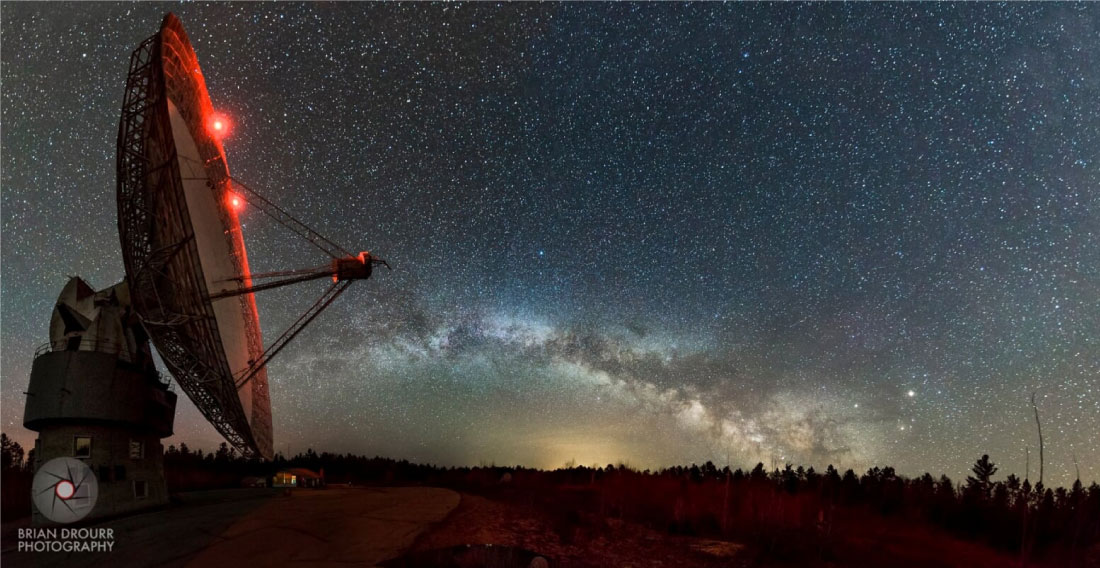
Completed and commissioned in 1965, the observatory was founded by Arthur Covington who directed the Observatory until 1978. Covington was also responsible for the expansion of the site and the construction of the 46m antenna.
Operating at radio frequency, the giant parabolic dish focuses electromagnetic radiation towards the focus cabin mounted on four legs above the surface. The efficiency gained by the large reflecting surface enables the telescope to receive signals from Mars and to determine precisely the location of the telescope with respect to Pulsars in neighboring star systems. The construction and operation of the observatory was reported
in Solar Physics by Arthur Covington in 1969.
ARO was the first telescope system to demonstrate Very Long Baseline Interferometry (VLBI) a technique that surpasses the accuracy of GPS and now enables the measurement of phenomena such as continental drift. The team comprised the National Research Council of Canada, Dominion Radio Astronomical Observatory, Penticton, the University of Toronto and Queen's University. The technique was reported by N. W. Broten in the Journal Science in 1967. The team was awarded the Rumford Medal for their achievement. Observations reported in Nature by Andrew and Purtonprovided an upper limit for the radio emission of supernova Delphini 1967. The telescope was used to observe emission lines from large molecules including HC5N, HC7N, HC9N and HC11N. This work is credited with the discovery of cyanodiacetylene in the interstaller medium. The observatory was also utilised to study the emissions of H2O, HN3 and OH in the gaseous nebulae in the milky way and other galaxies. Other work included the study of planetary nebulae, the black hole source Cyg X-1, pulsar 0329+54, the Sun, variable extra-galactic sources including B1 Lac, and the development of a database of 2.8 cm flux measurements for a wide range of objects.
Wikipedia provides further historical accounts of the Observatory's activities. ties.